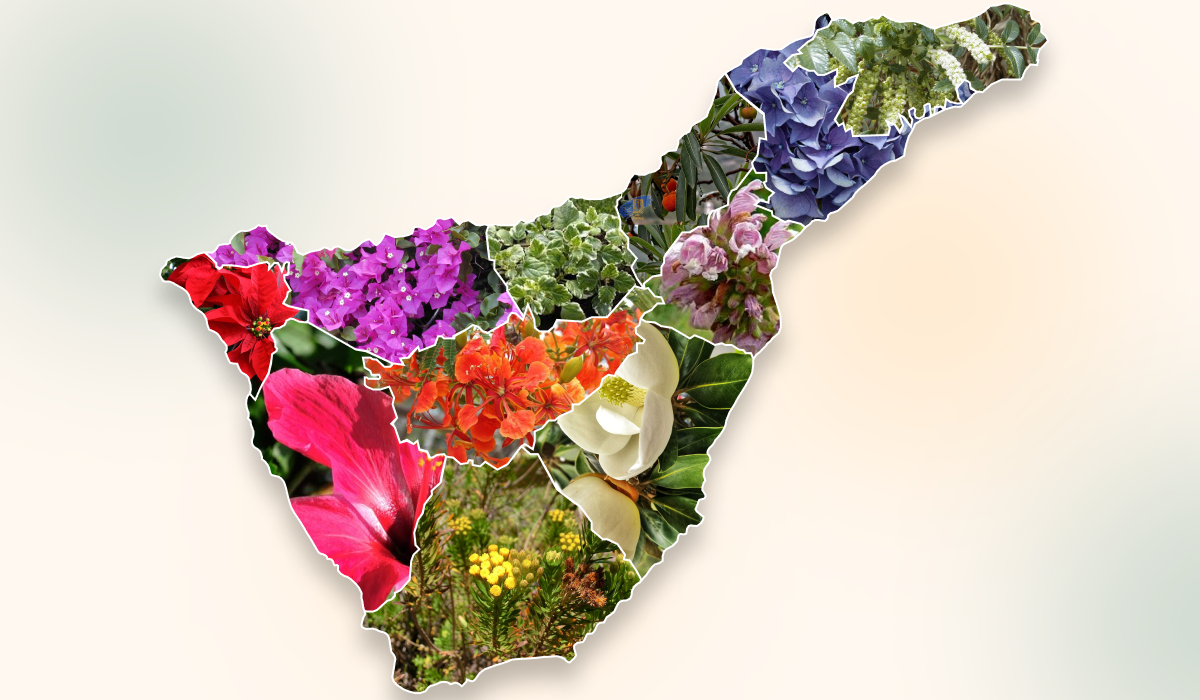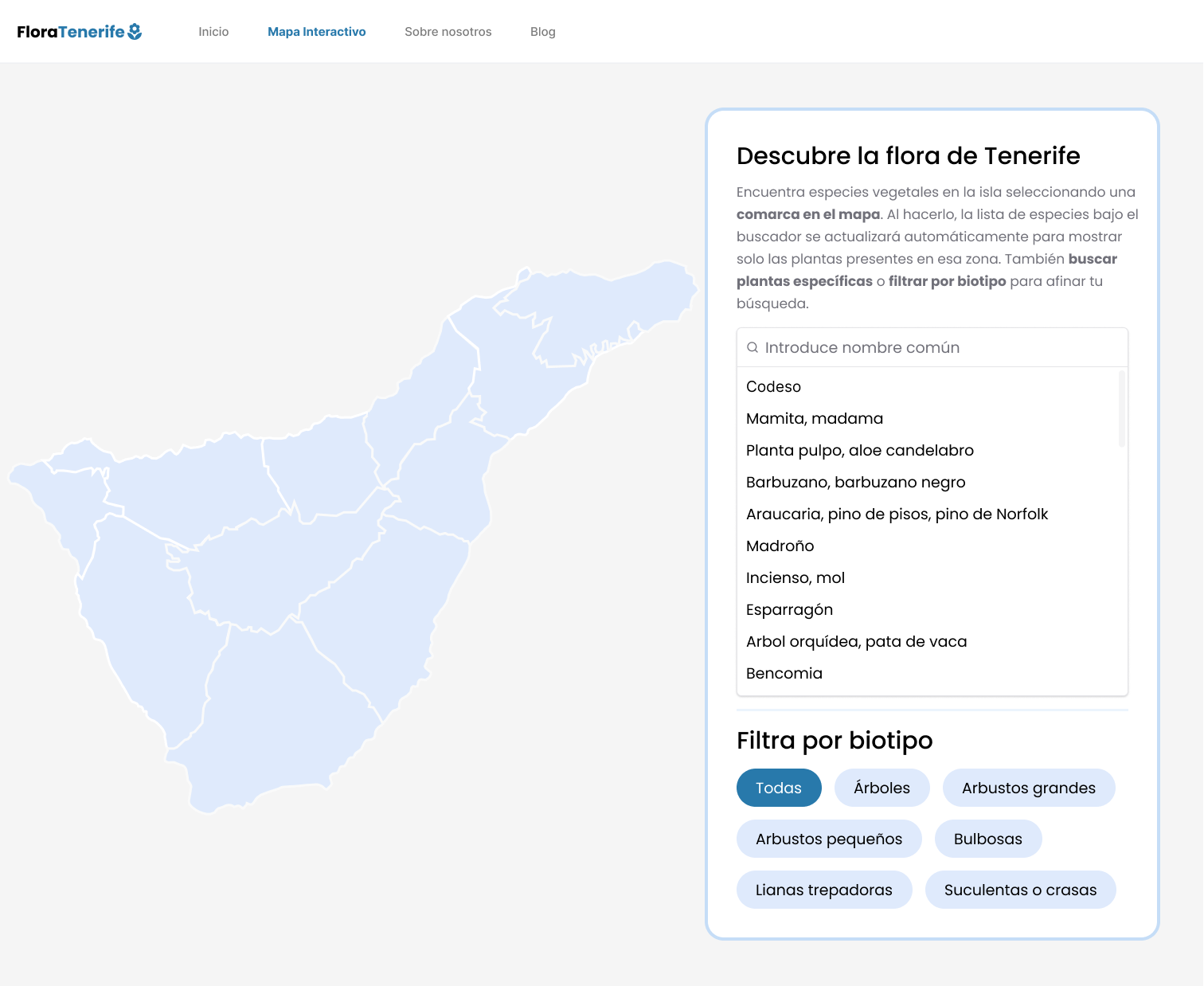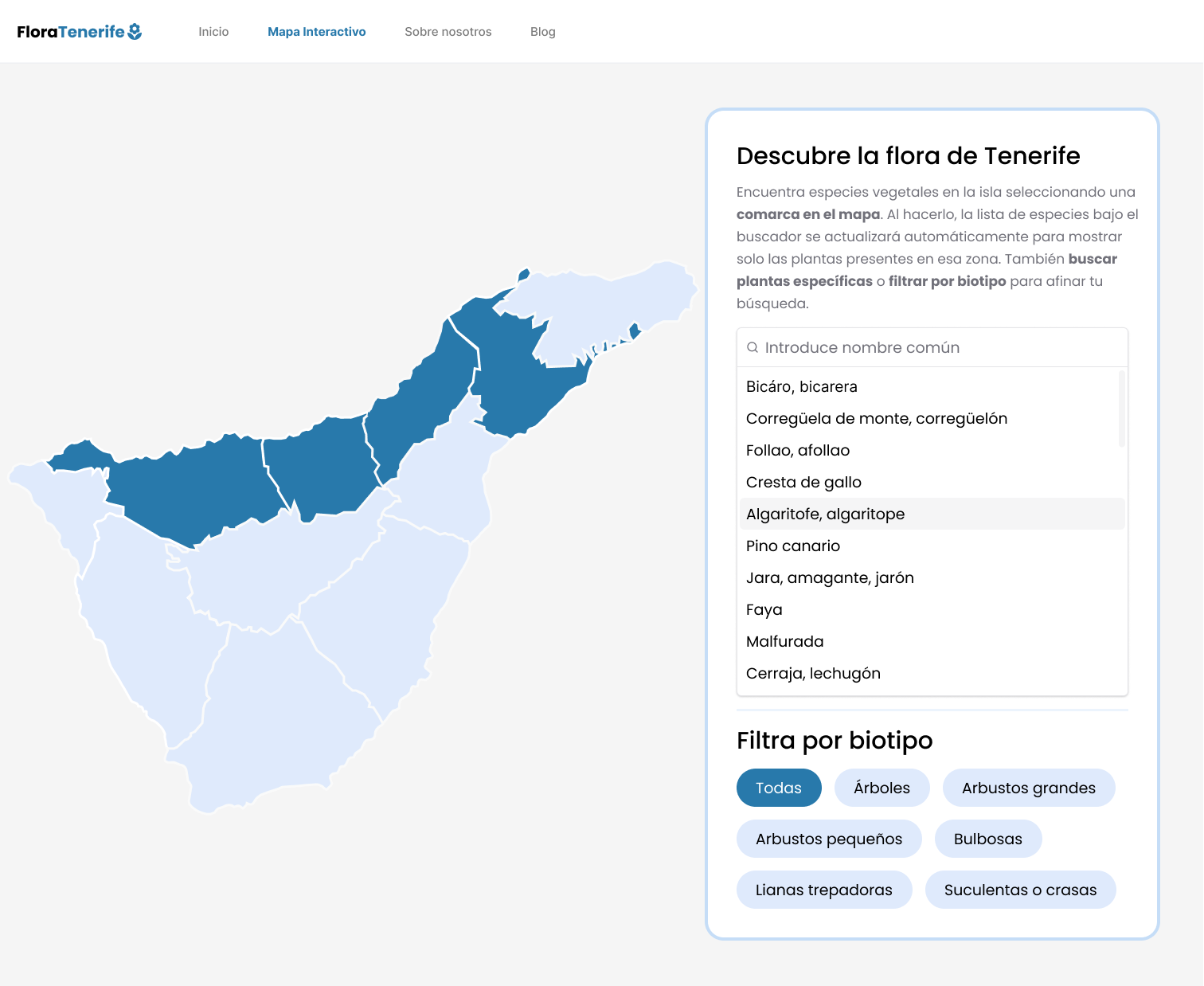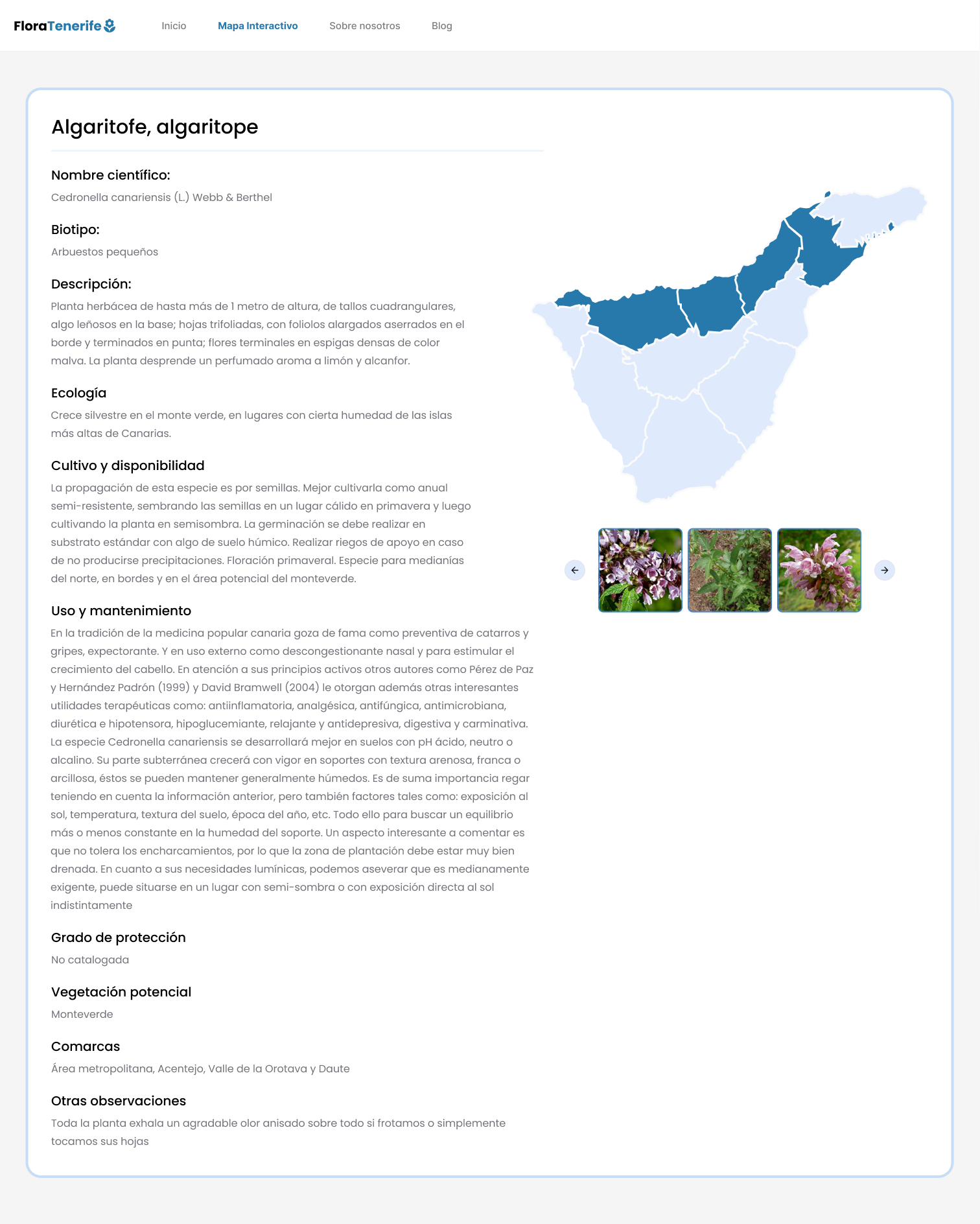
Use case: FloraTenerife, guide to plant species of the island
This use case proposes the development of a web portal using data from the Guía de Especies Vegetales de Tenerife dataset, which contains information to facilitate the identification and use of endemic and native plant species of the island.
This portal would be aimed at a diverse audience, including tourists, residents, botanists, educators and nature enthusiasts, with the objective of promoting the knowledge and conservation of Tenerife's plant biodiversity.
The portal will allow users to explore, identify and obtain detailed information about the island's plant species, as well as their distribution in the different environmental districts and bioclimatic floors. In addition, interactive functionalities will be included to facilitate navigation and access to information in an intuitive and visual way.
Datasets used
The portal and the construction of the interactive map will be based on the following resources of the dataset Guía de especies Vegetales de Tenerife.
- Plant species: detailed information on the island's plant species, including scientific name, biotype, description, traditional uses and conservation status.
- Environmental districts: data on the environmental districts of Tenerife, which will allow visualization of the distribution of species on the island.
- Bioclimatic floors: information on the different bioclimatic floors of Tenerife, which will help to understand the ecological conditions in which the species develop.
Functionalities of the case
The main functionality of this portal would be the interactive map of plant species. This visualization has been designed for this specific use case based on the map of regions available in the Cabildo's Guide to the Use of Plant Species of Tenerife. The operation of the interactive map would be as follows:
1. Users will be able to explore an interactive map of Tenerife showing a complete list of all plant species. This list can be filtered by biotype (trees, small shrubs, bulbous plants, etc.) and will allow a quick search by common name.

2. By selecting one or more environmental districts or biotypes on the map, a filtered list of plant species that meet these filters will be displayed. Users can click on the species name in the list to obtain more details.

3. Then, after clicking on the specific species, users will be able to see a screen that includes a file about this species, which will include information such as: scientific and common name; biotype (tree, shrub, bulbous, etc.); botanical description and main characteristics; geographical distribution by environmental districts in Tenerife; bioclimatic floors in which it is found (if any); traditional uses and maintenance; conservation status and protection measures.

Target audience
This portal will be aimed at:
- Tourists: interested in learning about the local flora during their visit to Tenerife.
- Residents: who wish to learn more about the plant species of their environment and their traditional use.
- Educators and students: as an educational tool to teach about the biodiversity and ecology of the island.
- Botanists and scientists: who need access to detailed and accurate information about the plant species of Tenerife.
- Nature enthusiasts: botany and environmental conservation enthusiasts.
Expected benefits
Some of the benefits that this use case can produce by providing greater knowledge about the plant species of Tenerife would be the following:
- Biodiversity promotion: fostering knowledge and appreciation of Tenerife's rich plant biodiversity.
- Responsible tourism: provide a useful tool for tourists wishing to explore nature in a responsible and sustainable way.
- Environmental education: provide educational resources for schools, universities and the general public.
- Conservation: raise awareness of the importance of protecting endemic and endangered species.
- Access to centralized information: facilitate access to detailed and updated information on the island's plant species in one place.


